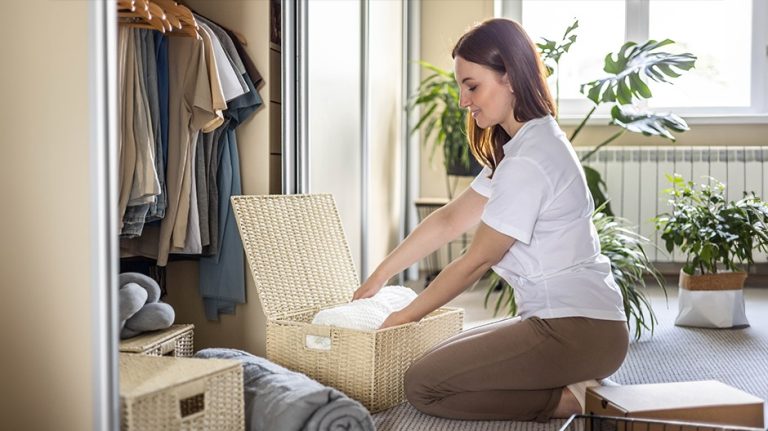In recent years, the shift toward sustainability and environmental responsibility has dramatically reshaped numerous industries, and cleaning and maintenance are no exception. As the world grapples with the challenges of climate change, pollution, and resource depletion, individuals and businesses alike are seeking ways to reduce their environmental impact. Cleaning and maintenance, traditionally associated with harsh chemicals and wasteful practices, are now being revolutionized by eco-friendly alternatives that prioritize both human health and the planet’s well-being.
The growing demand for greener solutions is not merely a passing trend—it’s a movement that promises lasting change. In this article, we explore the new eco-friendly trends in cleaning and maintenance that are transforming the industry, providing practical tips on how to incorporate these innovations into your own home or business. From biodegradable products to zero-waste practices, these sustainable practices are paving the way for a cleaner, healthier, and more sustainable future.
1. Biodegradable Cleaning Products: The Rise of Plant-Based Solutions
One of the most significant shifts in eco-friendly cleaning is the increasing use of biodegradable, plant-based products. Traditional cleaning agents often contain toxic chemicals that can linger in the environment and harm both humans and wildlife. These chemicals can pollute water sources and disrupt ecosystems. In contrast, biodegradable cleaners are made from renewable resources, such as citrus extracts, essential oils, and vinegar, and are designed to break down naturally without leaving a harmful footprint.
Brands like Method, Mrs. Meyer’s, and Ecover have pioneered the move toward plant-based cleaning solutions, offering everything from multi-surface cleaners to laundry detergents that are both effective and environmentally friendly. These products use ingredients derived from plants like coconut and palm, rather than petroleum-based chemicals, ensuring a lower environmental impact.
Not only are these cleaners safer for the environment, but they are also often gentler on the skin and respiratory system. People with allergies or sensitivities to harsh chemicals have found these alternatives to be more pleasant and healthier to use, further fueling the demand for eco-friendly products in households and commercial spaces.
2. Zero-Waste Cleaning: Reducing Waste, One Clean at a Time
Zero-waste living has become a lifestyle choice for many, and cleaning is no exception. The zero-waste movement focuses on minimizing waste generation by rethinking the materials we use and finding ways to repurpose, recycle, or compost items rather than throwing them away. In cleaning, this concept is gaining momentum with products and practices designed to reduce single-use packaging and minimize landfill waste.
One of the most prominent trends in zero-waste cleaning is the use of refillable cleaning bottles. Instead of buying new bottles every time a cleaning product runs out, many eco-conscious consumers are opting for refill stations or concentrate-based products that reduce plastic waste. Brands like Blueland and CleanCult offer reusable bottles paired with cleaning tablets or concentrated powders that dissolve in water, eliminating the need for single-use plastic packaging.
In addition, microfiber cloths have replaced paper towels as the go-to tool for wiping down surfaces. These durable, washable cloths can be used countless times, reducing the need for disposable paper products. For larger-scale commercial applications, refillable mop pads and dusters have become increasingly common, reducing the amount of waste generated in both residential and business environments.
3. Energy-Efficient Cleaning Equipment
The cleaning industry is also embracing energy-efficient equipment that reduces electricity consumption while maintaining high levels of performance. From robotic vacuums to energy-efficient washing machines, innovations in cleaning technology are making it easier to maintain a spotless environment while reducing energy consumption.
For example, robotic vacuums such as those from iRobot or Eufy are not only efficient but also energy-saving. These smart devices can be programmed to clean on a schedule, ensuring that power is used only when necessary. In addition, their compact design allows for less power usage while still providing a thorough cleaning, especially in hard-to-reach areas.
Similarly, energy-efficient washers and dryers are becoming the standard in both residential and commercial spaces. These appliances use advanced technology to clean more effectively while consuming less water and electricity. In fact, many new models feature eco-friendly modes that optimize water usage, reduce wash times, and minimize the need for harsh detergents.
In a broader sense, businesses in the cleaning industry are also adopting energy-efficient tools and machinery. Commercial-grade equipment, like floor scrubbers and pressure washers, is now designed with energy efficiency in mind, allowing businesses to reduce their carbon footprint while maintaining a high level of cleanliness.
4. Green Cleaning Services: Professional Solutions for Sustainability
For those who prefer to leave the cleaning to the professionals, green cleaning services are becoming an increasingly popular choice. These companies specialize in using eco-friendly products and practices, ensuring that homes and offices are cleaned without the environmental and health risks posed by traditional chemical cleaners.
Green cleaning services typically use non-toxic, biodegradable products and energy-efficient equipment, aligning with the broader eco-friendly movement. Many of these services also employ sustainable practices in their operations, such as reducing water usage and minimizing waste. Moreover, green cleaning companies often train their staff in best practices for sustainability, such as proper disposal of waste and efficient use of cleaning supplies.
For businesses that are seeking to improve their sustainability credentials, hiring a green cleaning service is a practical way to contribute to environmental goals. For homeowners, choosing an eco-friendly cleaning service means that their spaces will be free of toxic chemicals while still being maintained to a high standard.
5. Essential Oils and Natural Fragrances: A Healthier Alternative to Synthetic Scents
Another emerging trend in eco-friendly cleaning is the use of essential oils and natural fragrances as cleaning agents. Traditional cleaning products often rely on synthetic fragrances, which can contain harmful chemicals that trigger allergic reactions, headaches, or respiratory issues. In contrast, essential oils—such as lavender, eucalyptus, and tea tree oil—offer a natural, non-toxic way to add pleasant scents to cleaning routines.
These oils also offer additional benefits beyond just fragrance. Many essential oils have antimicrobial properties, helping to disinfect surfaces naturally. For example, tea tree oil is known for its ability to kill bacteria and fungi, making it a popular ingredient in eco-friendly cleaning products. Similarly, lemon and orange oils have natural antibacterial properties that make them effective for use in kitchens and bathrooms.
The use of essential oils in homemade cleaning solutions is a rising trend among eco-conscious consumers who want to avoid synthetic chemicals while still achieving a clean and fragrant home. Whether in DIY all-purpose cleaners, air fresheners, or even laundry detergents, essential oils provide a simple, natural, and effective way to keep your home fresh without the use of harmful chemicals.
6. Sustainable Packaging and Refill Stations
As the issue of plastic pollution continues to escalate, there has been a noticeable shift toward sustainable packaging in the cleaning industry. Many companies are now focusing on reducing plastic use by offering products in recyclable or compostable packaging. Furthermore, the introduction of refill stations at local stores and online platforms allows consumers to purchase cleaning products in bulk, significantly reducing the need for single-use plastic bottles.
This trend is gaining momentum as more businesses, from supermarkets to eco-focused brands, are responding to consumer demand for sustainable alternatives. By offering concentrated formulas or reusable containers, brands are making it easier for people to live more sustainably without sacrificing convenience.
7. Upcycled Materials for Cleaning Tools
Cleaning tools themselves are also undergoing a transformation. Companies are now producing items like brushes, brooms, and sponges made from upcycled materials, such as recycled plastic, bamboo, and even repurposed ocean plastic. These tools not only provide a sustainable alternative to traditional cleaning supplies but also reduce the environmental impact associated with manufacturing new products.
For example, the use of bamboo for cleaning brushes and handles has become increasingly popular due to its renewable nature and minimal environmental footprint. These tools are just as effective as their plastic counterparts, but they contribute to reducing the overall demand for non-renewable resources.
Conclusion
The eco-friendly cleaning and maintenance revolution is more than just a trend—it’s a necessary shift toward a healthier, more sustainable future. As consumers become more conscious of their environmental impact, the demand for green cleaning solutions is growing, driving innovation in the industry. From biodegradable products and zero-waste practices to energy-efficient equipment and sustainable packaging, the new trends in eco-friendly cleaning are transforming the way we maintain our homes and businesses.
By embracing these sustainable practices, we can not only reduce our carbon footprint but also create cleaner, healthier environments that benefit both people and the planet. As these trends continue to evolve, the cleaning and maintenance industry will undoubtedly play a key role in shaping a more sustainable and eco-conscious world.















